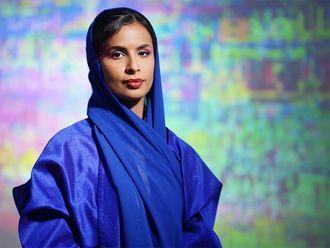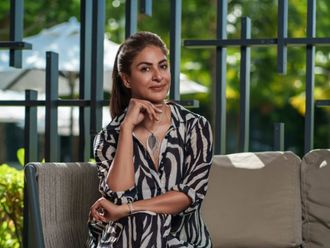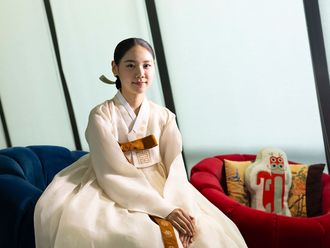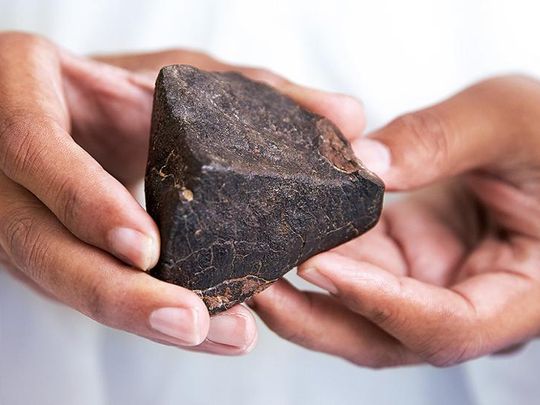
Hasan Ahmad Al Hariri thrusts a fist-sized piece of black stone into my palm. ‘Go ahead, you can hold it,’ he says. Quite like a chunk of iron, it is metallic to the touch and cold, perhaps because it has been lying on a table in Hasan’s air-conditioned office at Dubai’s Al Thuraya Astronomy Centre.
I am holding a piece of rock that is four and half billion years old.
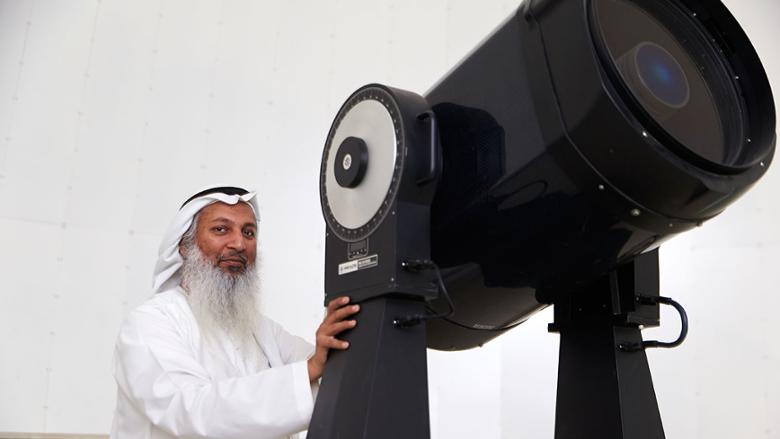
‘It’s piece of a meteorite from outer space,’ says Hasan, chief executive officer of the Dubai Astronomy Group, who spearheaded the creation of the Al Thuraya Astronomy Centre.
I’ve always been fascinated by space and science, and to hold a rock that travelled millions of miles through space before crashing into earth is a truly heady feeling. I examine it with renewed respect. Weighing around 300-400g, the stone appears to have a few veins of rust running through it.
‘You are right,’ says the genial Hasan when I mention it. ‘This rock has a lot of iron that has oxidised. ‘This, like a lot of rocks on display in this centre, was found in the Liwa desert.’
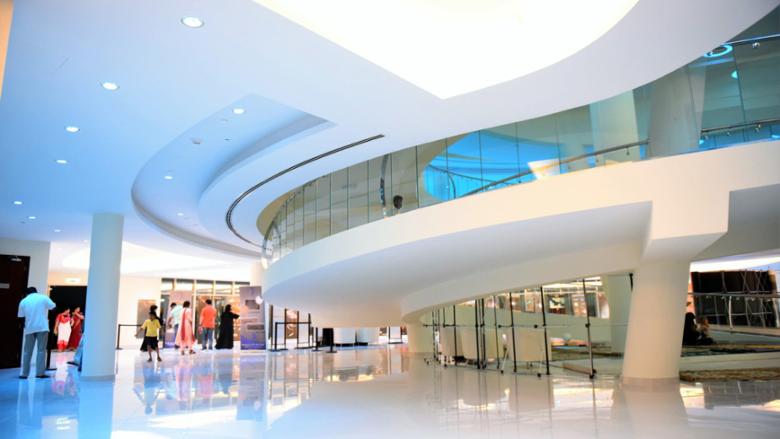
Extraterrestrial rocks are not the only highlight of the Al Thuraya Astronomy Centre in Mushrif Park, which is now preparing for the official launch following its soft opening in September. With a telescope that boasts the largest diameter lens for public observation, a 100-seat digital theatre and an innovation lab and robotics lab – as well as a Mars Habitat System and a life-size replica of the International Space Station on the way, the centre is set to become another star in Dubai’s constellation of must-visit tourist spots.
Astronomy tourism is already on Hasan’s radar; five-star resorts deep in the desert that cater to skywatchers are already attracting star-struck tourists, he says. ‘We also have plans to set up observatories in different parts of the country that will not only cater to tourists but also encourage youths to develop a thirst for science and broaden their knowledge of the skies and the stars,’ says astronomer. ‘Once we provide the youth with tools to study the sky and instill a love for stars, they will develop an appetite for learning science.’
The head of the Dubai Astronomy Group can vouch for it.
‘It was my grandmother who instilled an interest in astronomy in me,’ says Hasan, his face lighting up reminiscing his growing up years in the 60s in Dubai’s Deira.
‘She’d only need to look up at the sky to know when the weather would change; when summer would give way to winter, when we could expect the occasional rain. ‘It’s all there in the stars,’ she’d tells us,’ he says.
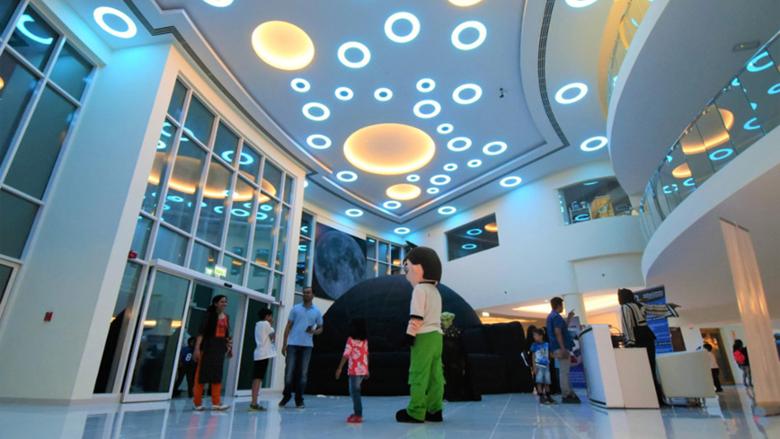
Since it was the early days of electricity in Dubai, light pollution was pretty much non-existent. ‘The stars and the Milky Way were visible clearly,’ says Hasan. ‘We used to spend a lot of time outdoors under the sky so to speak and it was normal to study the stars and try to learn more about them.’
Before long, thanks to his grandmother and parents who actively supported his passion to study the skies, Hasan began reaching for the stars. ‘I used to read up any book on astronomy that I could find,’ he says. ‘I was amazed at the wonders of the universe.’
He would also discuss all that he learnt with his father, Ahmad Al Hariri, a businessman, who encouraged him to read more books on science.
As the American space probes Voyager 1 and 2 took off from Cape Canaveral in the US in the 70s, so did Hasan’s dreams. ‘News about the launch grabbed my heart and I dreamed of becoming not an astronaut but an engineer who would design space probes,’ he says.
He shot off letters – ‘I typed them on an old typewriter – to Nasa asking a series of questions about the probes. ‘Seven months later, I received a packet of books about space crafts from Nasa,’ he says, proudly. ‘That ignited my passion further.’ He also sought out Arabic translations of books by Arthur C Clarke and other science writers. ‘I also enjoyed watching space-related TV shows such as Dr Who and Space: 1999.’
After a stint at Etisalat, Hasan joined the Ruler’s Court as IT manager where during his free time he began working to put together an astronomy group in the UAE and in 1989, set up the Emirates Science Club. ‘I wanted to pass on my knowledge to the next generation and instil in them a desire to pursue sciences – particularly astronomy,’ he says.
Hasan organised star-gazing events, lectures and seminars on stars and space ‘keen to bring astronomy to the people’.
Four years later, in 1993, Hasan, with a group of like-minded people from the Science Club, started the Dubai Astronomy Group (DAG). ‘In 2000, I resigned my full time job to concentrate on developing astronomy in the country,’ he says, caressing the meteorite on his table.
‘From the inception, the group’s mission was to be international in outlook, objective, scientific and open-minded. The aim was to educate people on astronomy, preserve the knowledge of our ancestors and ensure this science is easily understandable to even the layman.’ To that end, the group organised public activities, seminars and talks, and within a year the number of supporters and members skyrocketed. The DAG also presented project plans for an observatory and a centre to the government. Four years ago, the Dubai Municipality joined hands with the Group and cleared the decks for setting up the Al Thuraya Astronomy Centre in Mushriff Park.
What made him choose this site for the centre?
‘It’s one of the best parks in Dubai,’ says Hasan, looking out of the large windows of his office. ‘Plus, it’s close to the city and easily accessible for everyone.’ It also helps that the park is huge – it’s spread over 1,300 acres and can host thousands of visitors.
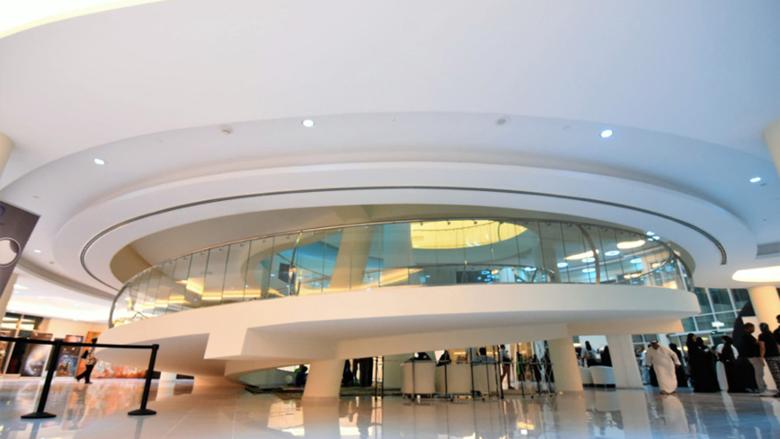
But an important factor that sets the Astronomy Centre apart from others of its ilk is that visitors can not just view the exhibits but actually touch and feel them. ‘In many science museums, meteorites and telescopes, for instance, are locked away in glass cabinets. Here, you can you can hold, smell and examine meteorites in detail. You can take the telescope outdoors and look at the stars.’
Hasan says Thuraya was chosen as the name for the centre because ‘Thuraya is the Arabic name for a group of stars and often looks like a giant celestial chandelier which is what the centre will closely resemble when it is complete.’
Also getting final touches is the telescope deck on the roof of the centre. With a one-metre diameter lens, it is the largest in the country for public observation and the finest in this region for studying solar activity.
The state-of-the-art dome is designed to withstand category four, 400kph winds and has several thermal layers to make sure the internal climate stays at a level that does not damage the telescope.
The telescope can be used to study the sun in detail and will be powerful enough to detect even planets far outside our solar system by seeing the faint dip in light as they pass in front of their stars, he says. It will be able to record data, perform astrophotography and will function all through the year.
The centre also boasts an astronomical and scientific electronic library, an astro cafe, an outside observation deck, a 100-seat theatre, interactive class room and laboratories where workshops, seminars and talks will be held. An innovation lab including an electronics and robotics lab is at hand for those who wish to give shape to their thoughts and ideas related to space and space exploration, says Hasan.
‘The main objective of the centre, apart from inspiring the new generation to explore the wonderful world of space and astronomy, is to establish a foundation of astronomy and space research centre and to create new globally specialised jobs for citizens,’ says Hasan.
But why astronomy and not any other science?
‘To me, astronomy has elements of all major subjects – it has maths, physics, chemistry, biology, history and geography. It even has psychology. Learning astronomy can help you change your perspective about life. It can make you humble when you realise your perspective in terms of the universe, it can make you rethink your actions, deeds and make you reorganise your life for the better,’ he says.
Speaking of life, does he believe in extra-terrestrial life?
Hasan considers the question for a while. ‘I would say the probability is very high for intelligent life to exist elsewhere in the universe. What can happen on earth could happen on some other planet, too. I would in fact be surprised if we did not find some kind of life elsewhere in space.’
Hasan’s answer brings us in orbit with Mars. At the Thuraya centre, a Mars Habitat System, in which visitors will be able to experience what life on Mars would be like, is planned.
‘The Mars Habitat System is not about teaching people how to live on Mars,’ explains Hasan. ‘It is about how to live wisely on earth.
‘Mars has no water, air, plants, living things... Once we create an environment where people will have to create water, air and all other things necessary to sustain life, they will realise the value of earth and learn to respect it better. We will then appreciate the values of our earth. It will make people more eco-conscious.’
Hasan wants people to appreciate terra firma. ‘We take earth for granted; we don’t care about it. We must learn to live in peace and as friends of earth,’ he says.
Upcoming projects at Thuraya Astronomy Centre
A life-size replica of the International Space Station will complement the centre and give visitors a better idea of life in space. Tourism, too plays a role in space exploration: An astronomy resort with five-star facilities in a special area in the desert will enable people to view the Milky Way at any time of the year. An observatory in Hatta for research and development will also host tourists. Named Suhail Astronomical Observatory for now – Suhail because it is one of the most important starts in Arab culture – it is scheduled for completion in 2020.
There are also observatories planned for Jebel Hafeet in Al Ain and Jebel Jais, the UAE’s highest mountain, in Ras Al Khaimah. ‘We want to take science to the people,’ says Hasan.




